Tag archives: fusion
World’s smallest Christmas card and a fusion Christmas number one
By Hamish Johnston
We are winding down for Christmas here at Physics World and taking a well-deserved break before we launch into 2018.
Over the next week or so, stay tuned for festive content including a comic caption competition on Christmas Day that is inspired by this year’s Nobel prize.
View all posts by this author | View this author's profile
Star Wars fact or fiction, Wikipedia editor in space, stellarator tour
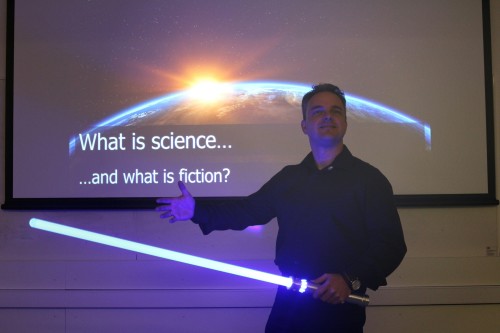
Fact and fiction: Carsten Welsch. (Courtesy: Cockcroft Institute)
By Hamish Johnston
What is it about Star Wars that captivates the imaginations of physicists? Earlier this week Carsten Welsch, who is head of physics at the University of Liverpool and head of communication for the nearby Cockcroft Institute, gave a presentation called “Physics of Star Wars” to an audience of hundreds of secondary school children, undergraduate and PhD students and university staff.
View all posts by this author | View this author's profile
The STAR of the show
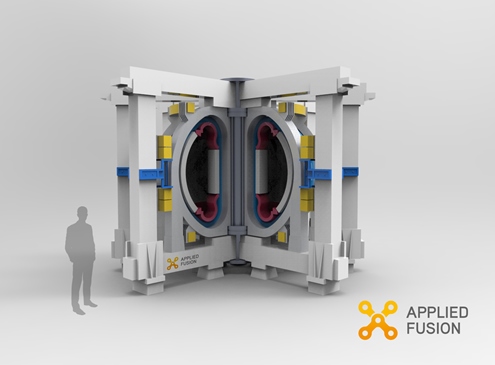
Grand designs. (courtesy: Applied Fusion Systems)
By Michael Banks
You may remember in 2014 when we reported that entrepreneur Richard Dinan – a former star of the UK reality-TV programme Made in Chelsea – was venturing into fusion energy.
He founded the firm Applied Fusion Systems with the aim of building a prototype fusion reactor. The 30 year old, who doesn’t have a university degree, claims to have taught himself tokamak design and employs a small team of scientists who are working on a design.
Well, the firm has now released its first blueprint for a spherical fusion tokamak and is seeking £200m in investment to build not one, but two of the machines.
View all posts by this author | View this author's profile
A fusion fly-over
By Michael Banks
To the critics, a working fusion power plant is always 30 years away.
But in the past decade, progress has been made at the construction site of the ITER fusion reactor in Saint-Paul-lez-Durance, France.
Ten years ago – on 29 January 2007 – preparation work began on ITER’s home in the large stretch of national forest. Within two years, more than three million cubic metres of rocks and soil had been removed to level the site ready for the behemoth.
View all posts by this author | View this author's profile
Terahertz analytics for better plasmas
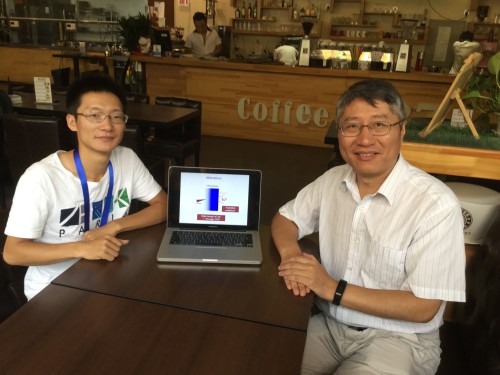
Terahertz generators: Gianqian Liao (left) and Yutong Li.
By Hamish Johnston in Beijing
Today was the last day of the Fall Meeting of the Chinese Physical Society here in Beijing and this morning I grabbed a coffee with Yutong Li and Giuqian Liao. I was hoping to learn more about their work that we covered in May in “Coherent terahertz radiation created in laser plasmas“.
Their technique involves firing a powerful laser pulse at a thin metal foil. This creates a plasma in which electrons are accelerated to high energies before bursting out of the foil. When they emerge, coherent terahertz radiation is given off.
View all posts by this author | View this author's profile
Physics World 2016 Focus on Nuclear Energy is out now
By Michael Banks
Proponents of nuclear power in the UK have endured an agonizing wait for Hinckley Point C – a European pressurized water reactor (EPR) to be built in south-west England that would fulfil 3.5% of the UK’s electricity needs. Earlier this year, it looked as if the French utility giant EDF would finally give the project the thumbs up and start construction. However, following months of political wrangling – and resignations by senior EDF executives – a final decision by the EDF board is yet to see the light of day.
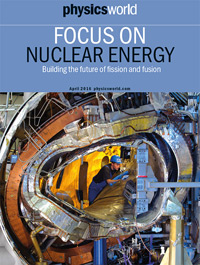
Hinckley Point C is not the only EPR under construction that has been beset with delays and cost hikes: two in China, one in France and one in Finland have also had issues. In this first-ever Physics World Focus on Nuclear Energy, we delve into the EPR design and Hinckley Point C, as well as look ahead to other, more ambitious reactor designs in the pipeline – known as generation-IV designs – that could vastly reduce the amount of nuclear waste produced. Although work on such designs has slowed following the 2011 Fukushima nuclear accident in Japan, supporters argue that generation IV will still play a vital role in the long term.
The focus issue is not only devoted to fission, but fusion too. For decades physicists have dreamed of using fusion to generate electricity and, with construction well under way on the ITER fusion tokamak in Cadarache, France, that vision is now getting closer to a reality. But is ITER the only way forward? We explore how several private firms are developing small-scale fusion technologies, while in Germany a novel “stellarator” device has just started up that promises to deliver a “steady state” plasma.
View all posts by this author | View this author's profile
Comic book fusion, Nathan Myhrvold on innovation, and picking winners of the Global Physics Photowalk
By Hamish Johnston
The comic book artist Frank Espinosa and Princeton University’s Sajan Saini have joined forces to create a comic book called A Star For Us. The book begins with a brief history of our understanding of nuclear fusion in the Sun and goes on to chronicle the challenges of creating a mini-Sun here on Earth.
Espinosa and Saini – who is a physicist turned professor of writing – spent time with physicists at the Princeton Plasma Physics Laboratory. Espinosa says that he was impressed by the researchers enthusiasm for the future of fusion energy. “I was trying to channel that energy of hope,” he explains.
“The mood of the comic tries to really capture a sense of a vast cosmic scale being made palpable, being made into something that we can realize within our own hands,” says Saini. I agree and you can judge for yourself by downloading a PDF of the comic book free of charge.
The physicist and former chief technology officer at Microsoft, Nathan Myhrvold, has a nice essay in Scientific American about the roles of the private and public sectors in driving technological innovation. He explains that when Microsoft Research was created in 1991, the company was keen on not making the same mistakes as AT&T, IBM and Xerox – which were all in the process of winding down their world-famous research labs. The problem was that these firms funded research in areas that they were not immediately able to exploit commercially. Myhrvold points out that many of the technologies first developed in those labs – including the transistor and giant magnetoresistance data storage – made much more money for fast-moving competitors such as Microsoft than they did for the companies that did the basic research.
View all posts by this author | View this author's profile
Preparing for DEMO
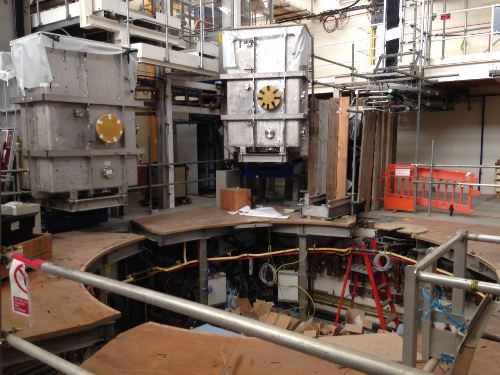
Laying the groundwork: engineers are rebuilding the Mega Amp Spherical Tokamak. (Courtesy: Michael Banks)
By Michael Banks
Yesterday I took the train from Bristol and headed to the Culham Centre for Fusion Energy (CCFE) in Oxfordshire.
Owned and operated by the United Kingdom Atomic Energy Authority, the CCFE is already home to the Joint European Torus (JET) tokamak, which in 2011 underwent a £60m upgrade programme that involved replacing the carbon tiles in the inner reactor wall with beryllium and tungsten. The purpose of this retrofit was to test the materials that are to be used in the ITER fusion experiment, which is currently being built in Cadarache, France.
View all posts by this author | View this author's profile
Candy corn in space, compact fusion reactors and physics in Palestine
By Hamish Johnston
Besides the great views of the Earth, one of the best things about being on the International Space Station (ISS) must be messing around in near-zero gravity. In the above video on Science Friday the American astronaut Don Pettit describes an “experiment” that he did on the ISS using candy corn, which are kernel-like sweets. He begins with a blob of floating water into which he inserts the candy corn pointy-end first. The points are hydrophilic so they tend to stay in the water, and eventually Pettit has a sphere of candy corn packed around the water. The flat ends of the candy corn have been soaked in oil to make them hydrophobic so the candy corn layer acts like a detergent film or one half of a cell membrane. It’s a fun video and I wonder how he got the idea in the first place?
View all posts by this author | View this author's profile
Ice cream that changes colour, tag-team parenting and the ITER director-general hits back

Shades of pink: the Xamaleón ice cream in action. (Courtesy: IceXperience)
By Hamish Johnston
It has been a cracker of a summer here in south-west England, with lots of sunshine and temperatures in the mid-twenties just about every day. Not surprisingly, I have been eating my fair share of ice cream, but unlike this concoction whipped up by a physicist-turned-chef in Spain, the stuff you get in Bristol does not change colour when you lick it!
